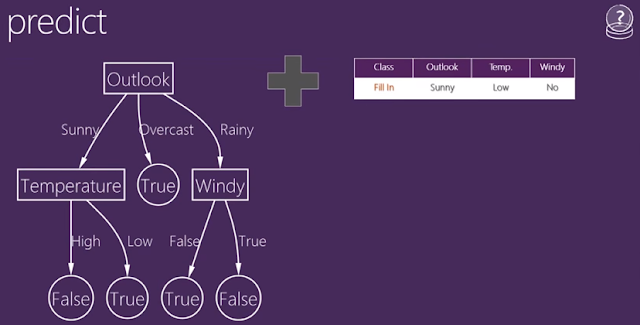Separate between the Known and the Unknown.
The Known (defined) can be Something or Nothing.
The Unknown (undefined) can Null (undefined) or Error (something we tried to define but failed)
The known can be a scalar (numerical) or a category/class (non-numerical).
Numerical Nothing is 0, something is <> 0.
Non-numerical Nothing can be (if text) "", and something is <>"".
"Often, the individual observations are analyzed into a set of quantifiable properties, known variously as explanatory variables or features. These properties may variously be categorical (e.g. "A", "B", "AB" or "O", for blood type), ordinal (e.g. "large", "medium" or "small"), integer-valued (e.g. the number of occurrences of a part word in an email) or real-valued (e.g. a measurement of blood pressure)."
We have started to transform any sense to a numerical equivalent so we can simulate, sounds, visuals, etc. But it is still not always easy to write (talk/) about something in a consistent way. There are so many synonyms, and the synonyms are sometimes come from the different faculties (like different languages, different habitats).
Philosophy
We might not think (talk) about it today, but eventually we will come to take it for granted that Everything!, can be built on the building blocks of Philosophy. The catogories of what we can know; Epistemology, Ontology.
I believe the highest value lies in the sensory feeling, and for both the individual and the total collective - a form of aesthetic (with Rawls ethics; like if roles were switched).
Aesthetics has two dimension; the efficient and the effective. The true "beauty" lies in efficiency effectiveness; any life form is such an example, and the ultimate beauty lies in the expression and co-existence of all and any possible life forms. Efficiency to continue the longest; with lest amount of resources (energy(E)/material(m)/time/space/...). Note: Machine learning to find correlations like E=mc2.
Ethics are our guides (to learn); to do right, and the feedback to do right the next time. I am thinking that juridical (machine learning) system should be built on the outcomes/values we seek.
Picture: Sensors transforms something unknown to known; real to meta (source)
Picture: Fundamental logic without a standard (source)
A Cluster is commonly visualised as a 2-dimensional correlation (but could be any dimensional correlation). Observation set into sub-sets (slide88). Note that every evolution (development) start as an anomaly, from the norm. So we need a anomaly detection system that values the anomalies an something precious.
Following the same logic, things can be defined to have a value or not.
-----
Self service
Empower means to give
+ Resources
+ Time (a kind of resource)
+ Motivation
a) vision of a product (as a resource)
b) vision of a product (as a feeling; from sense to sensation)
I believe in individual freedom as long as it does not intrude on any other person (life forms; within reason).
-----
Type of Patterns:
* Classification, Cluster/Groups
* Hierarchies (of clusters)
* Measures (purpose to be used for arithmetic) or Dimensions (...could be counted, or sequenced)

Picture: Classification (define), Clustering (meaning), Regression (prediction) - slide16


Picture: Supervised/unsupervised learning
Supervised ML = Predict the future. We know what we are going to learn = What is True
Un-S.ML = Understand the past. Find patterns/categories
The ML-process:
1.
2.
3.
4.
---------
Process mining
data mining:

Picture: data mining terminology - think: The Output has Attributes

Picture: process mining terminology
For process mining, we have a slightly different meta model in mind because we look at the data from a process perspective.
The actual process:

---
5min guide to Machine learning
Good presentation
* Classification, Cluster/Groups
* Hierarchies (of clusters)
* Measures (purpose to be used for arithmetic) or Dimensions (...could be counted, or sequenced)
Picture: Classification (define), Clustering (meaning), Regression (prediction) - slide16
Picture: Supervised/unsupervised learning
Supervised ML = Predict the future. We know what we are going to learn = What is True
Un-S.ML = Understand the past. Find patterns/categories
The ML-process:
Picture: video
2.
3.
4.
---------
Process mining
data mining:
Picture: data mining terminology - think: The Output has Attributes
Picture: process mining terminology
For process mining, we have a slightly different meta model in mind because we look at the data from a process perspective.
- One event is an activity that was executed in the process (process step).
- Events are grouped to a case, and linked together in a process instance, or case.
- So each case forms a sequence of events—ordered by their timestamp.
The actual process:
---
5min guide to Machine learning
Good presentation
----
_logo.png)
Weka is a collection of machine learning algorithms for data mining tasks. The algorithms can either be applied directly to a dataset or called from your own Java code. Weka contains tools for data pre-processing, classification, regression, clustering, association rules, and visualization. It is also well-suited for developing new machine learning schemes.
----
Good summary
"Insamlade data" + "Ny
insikt" + "Handling" = ”Värde”






Inga kommentarer:
Skicka en kommentar